Abstract
Neutron diffraction measurements of the orientation of the apatite crystals show a significant preference of their c-axes for the vertical direction. This preference increases from bottom to top of each vertebral body and is substantially greater for the second than for the fifth lumbar vertebrae. This is in line with the predominantly vertical forces which the former withstands.
Full text
PDF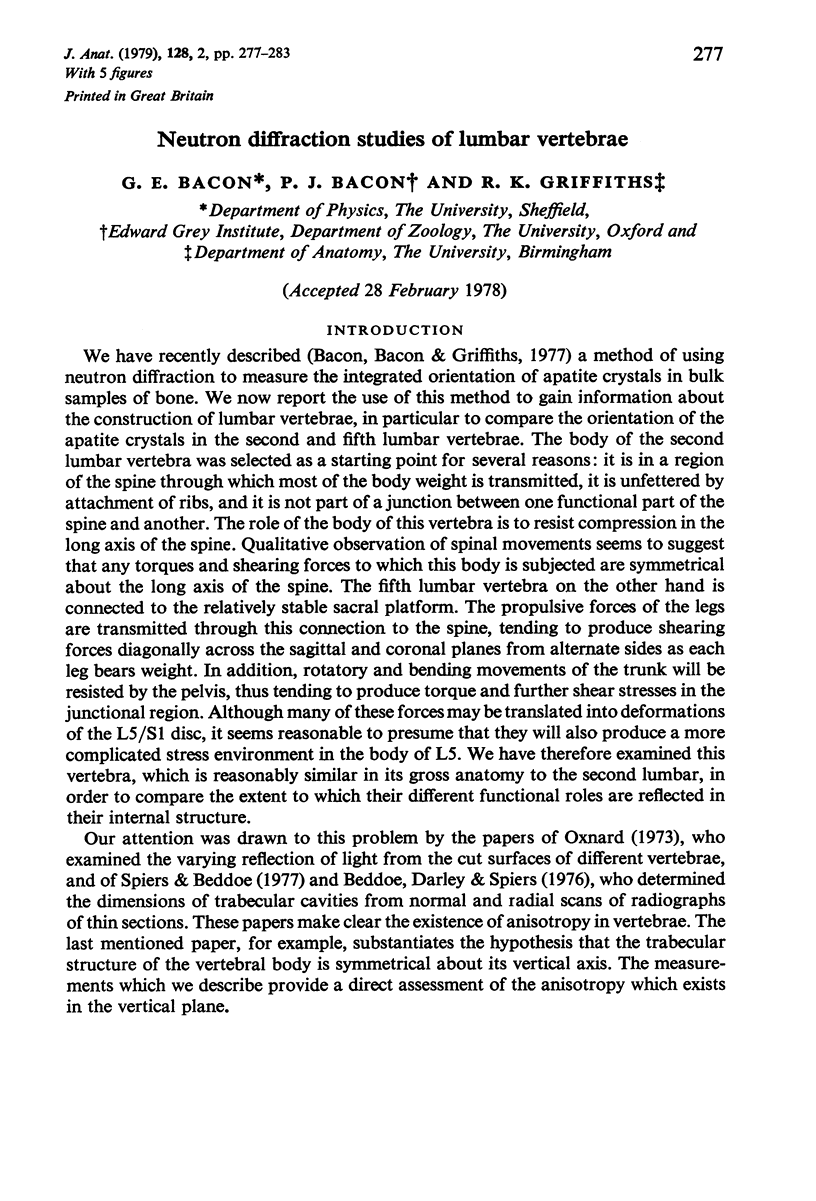

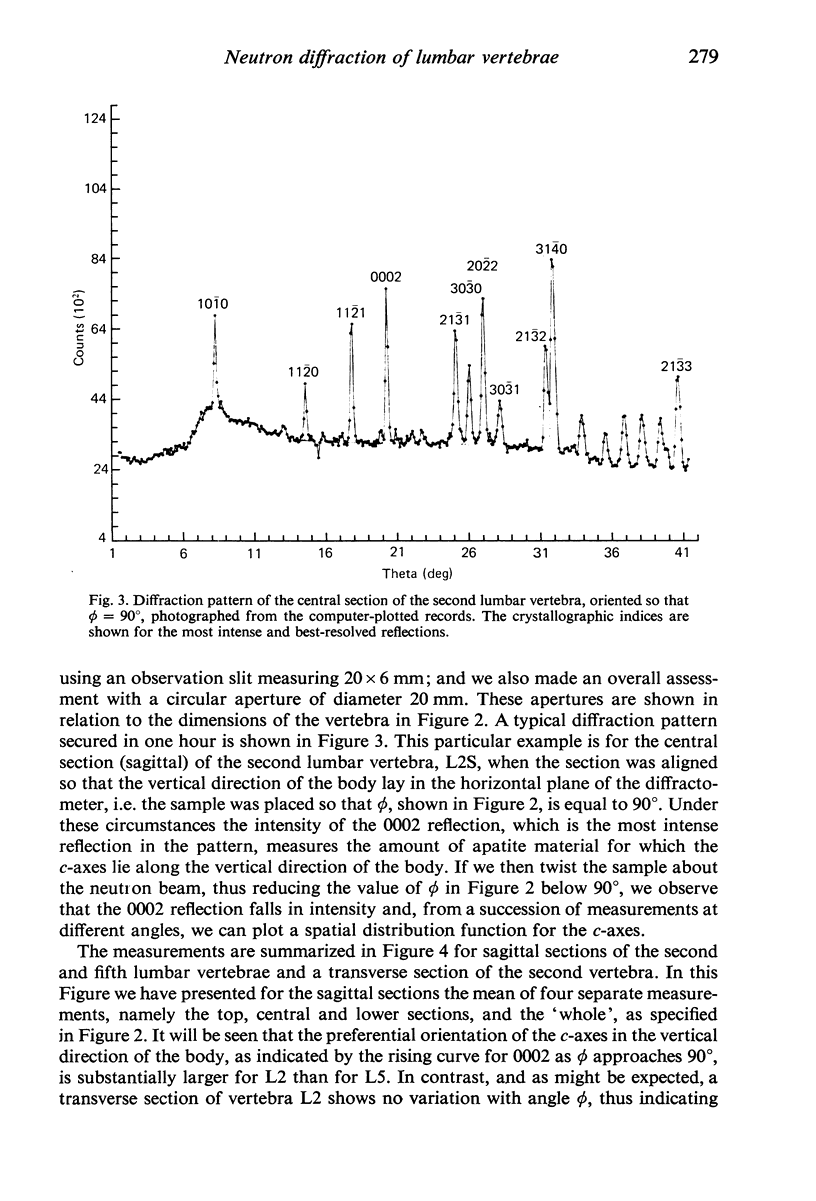
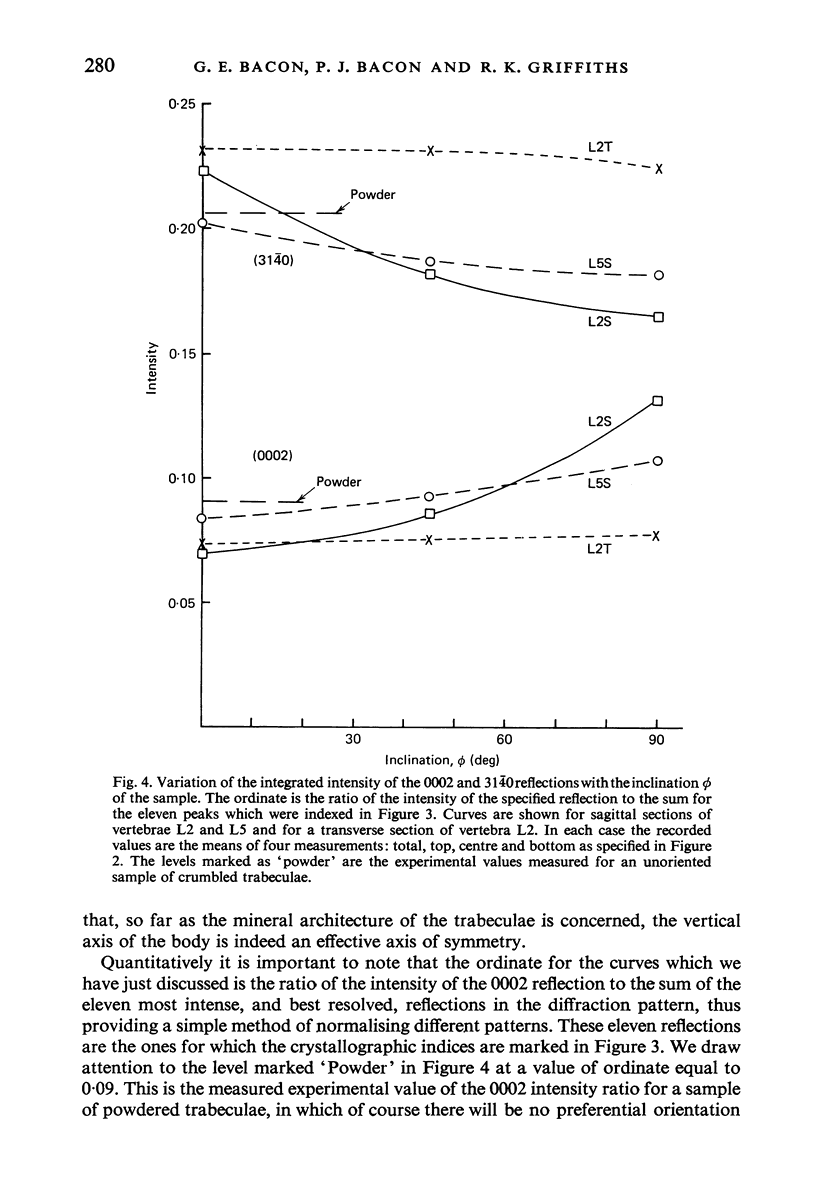
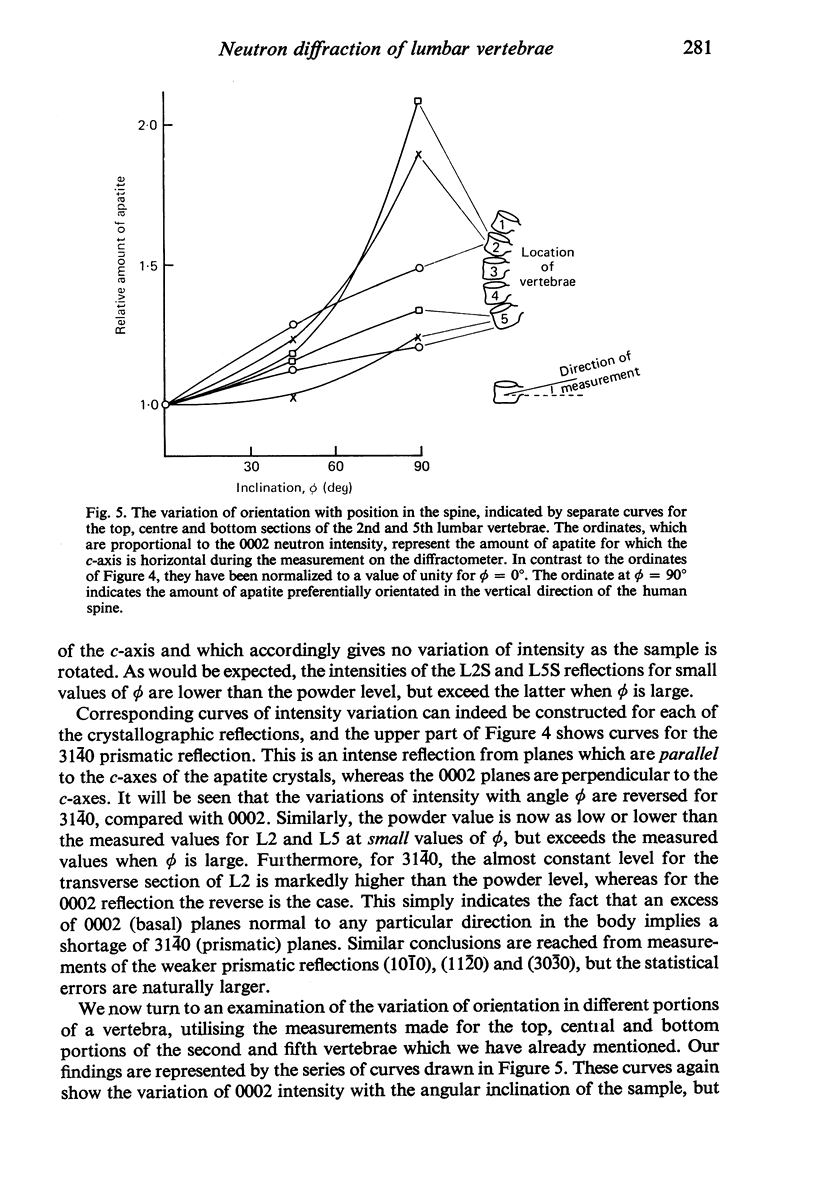
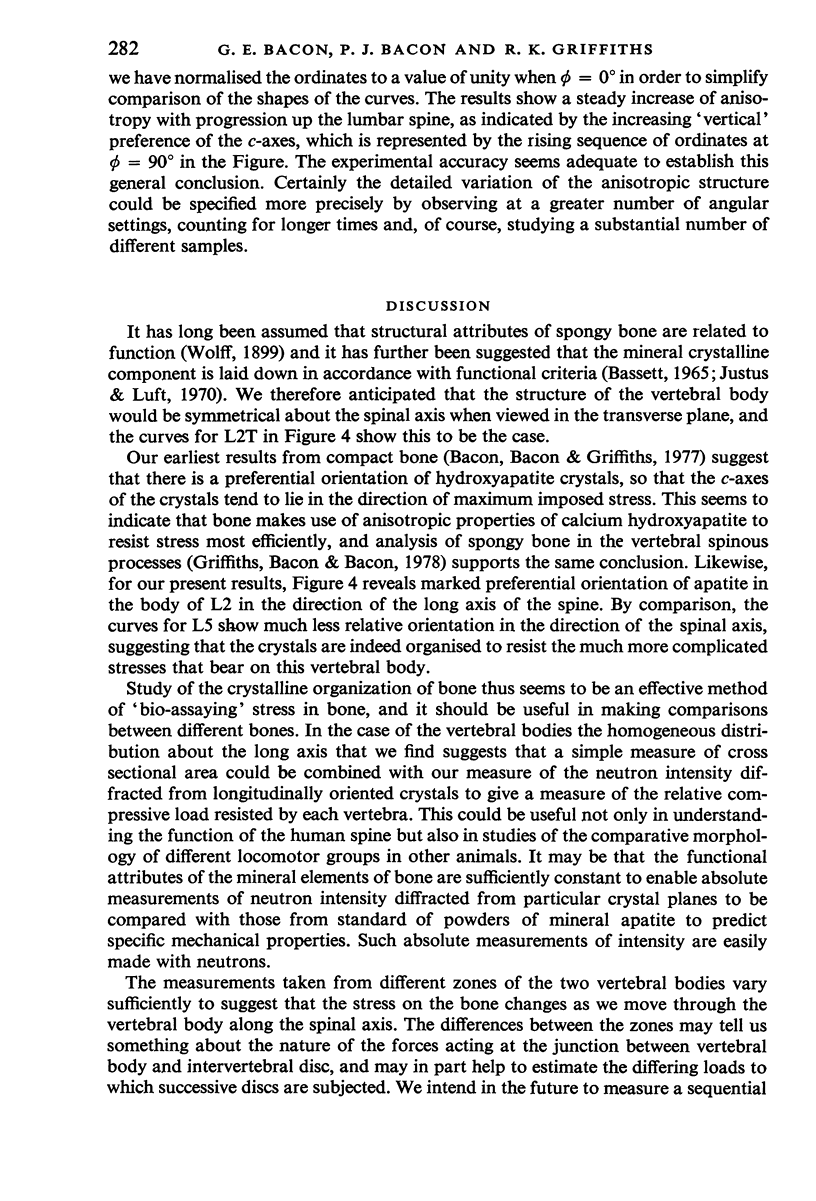
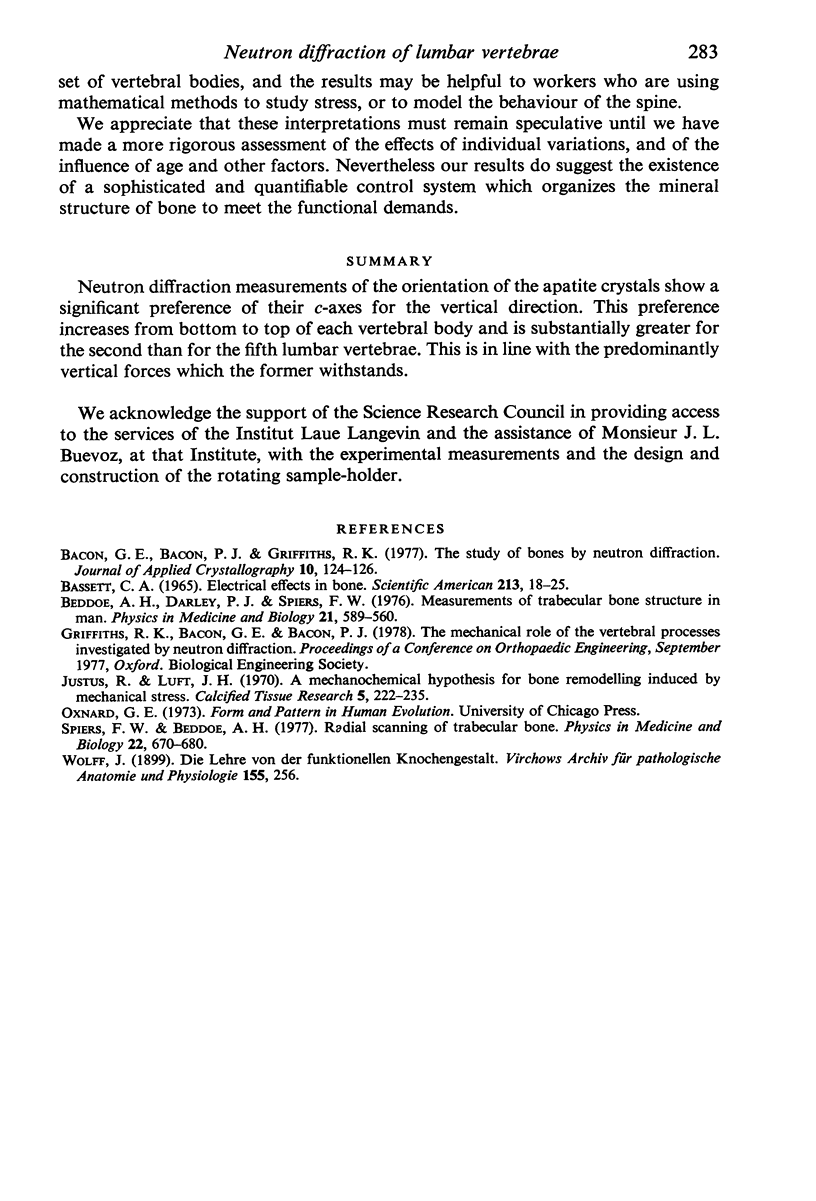
Images in this article
Selected References
These references are in PubMed. This may not be the complete list of references from this article.
- Bassett C. A. Electrical effects in bone. Sci Am. 1965 Oct;213(4):18–25. doi: 10.1038/scientificamerican1065-18. [DOI] [PubMed] [Google Scholar]
- Beddoe A. H., Darley P. J., Spiers F. W. Measurements of trabecular bone structure in man. Phys Med Biol. 1976 Jul;21(4):589–607. doi: 10.1088/0031-9155/21/4/010. [DOI] [PubMed] [Google Scholar]
- Justus R., Luft J. H. A mechanochemical hypothesis for bone remodeling induced by mechanical stress. Calcif Tissue Res. 1970;5(3):222–235. doi: 10.1007/BF02017551. [DOI] [PubMed] [Google Scholar]
- Spiers F. W., Beddoe A. H. 'Radial' scanning of trabecular bone: consideration of the probability distributions of path lengths through cavities and trabeculae. Phys Med Biol. 1977 Jul;22(4):670–680. doi: 10.1088/0031-9155/22/4/002. [DOI] [PubMed] [Google Scholar]



